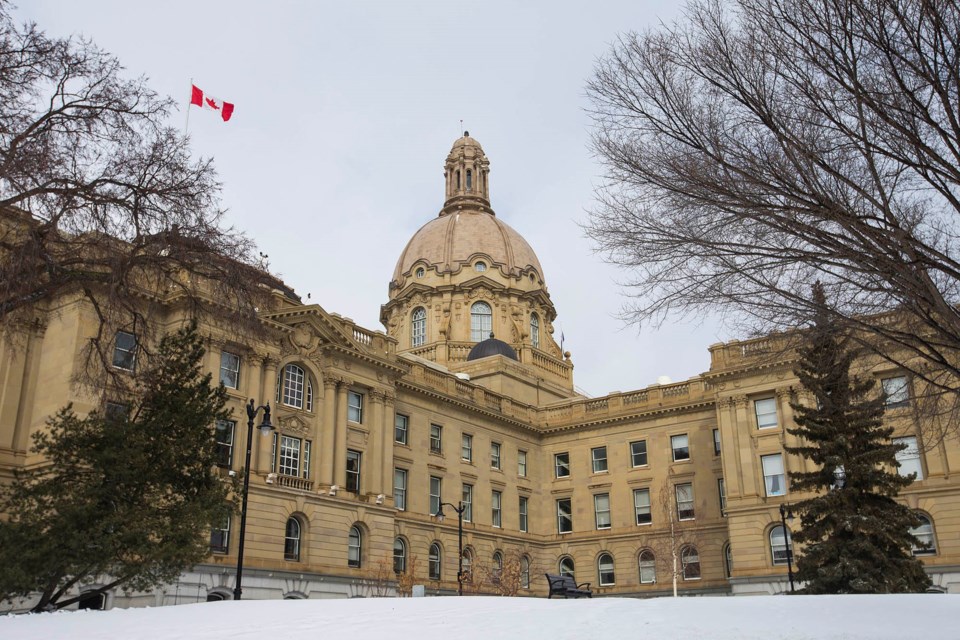Morinville-St. Albert UCP MLA Dale Nally says looking at the provincial deficit is discouraging, but it’s important to remember why it is so big.
Nally said the UCP got elected on a platform of jobs, the economy and building a pipeline, but battling COVID-19 had to take priority.
“The most important thing became supporting Albertans and that's what you see in that budget,” Nally said.
On Thursday morning, the province posted the most recent numbers on Alberta’s fiscal picture, detailing a $24.4-billion deficit – the largest in the province’s history and $16.8 billion higher than was predicted in the provincial budget in February.
“What has changed (since the UCP got elected) is a triple Black Swan event: the global pandemic, the economic collapse and the global collapse in energy prices, and it has put Alberta in a position where we have a $24-billion deficit,” Nally said.
The first quarter update, which detailed the provincial finances from April, May and June, outlined revenue dropping by $11.5 billion through the current fiscal year, bringing revenues down to $38.4 billion. The numbers are the first look at the provincial financial picture since COVID-19 hit the province.
Meanwhile, total expenses have jumped by $5.3 billion, up to $62.6 billion. Alberta Finance Minister Travis Toews suggested on Tuesday morning that more cuts will be on the way to help deal with the deficit, but gave no clear areas that would see cuts in the budget.
The provincial debt is now slated to hit $99.6 billion by the end of March 2021, up $25.4 billion from 2020, putting the debt-to-GDP ratio at 22 per cent. Debt servicing costs will hit $2.2 billion.
Nally said the province is now suffering from both a revenue and expense problem. The MLA said the rolling back of expenses will be seen in the next budget and a fiscal reckoning is on the way, with the government looking to “find significant savings.”
“Any suggestion that we can borrow our way out of this problem is just not an accurate reflection of events on the ground,” Nally said.
As for the other side of the ledger, Nally said the province is dealing with falling revenues by doubling down on the UCP strategy of creating jobs, and investing in the economy and pipelines.
“We accelerated the job creators' tax cut because our plan was to reduce taxes for job creators over four years so that we could bring investment back to Alberta,” Nally said, referring to the province's decision to cut its corporate tax rate. This summer, the corporate tax rate dropped to eight per cent.
Nally said over the coming weeks and into September, the government will start to paint a clear picture of what Alberta's recovery plan looks like. Components of it will be released through the month of September.
Not all of the deficit is COVID-19 spending, Renaud says
St. Albert NDP MLA Marie Renaud said not all of the deficit can be blamed on COVID-19.
The MLA said leading up to the pandemic, the province's financial picture was not rosy.
While the entire world is reckoning with the pandemic, Renaud said the province is also facing some very significant challenges that have impacted Alberta’s financial situation.
“What the UCP fail to really talk about is that we were not in good shape before the pandemic. So we had already lost 50,000 jobs and we know that our economy was already contracting,” Renaud said.
“They made some decisions that have made things worse, including changing our the ability to collect revenue from profitable corporations to the tune of almost $5 billion,” Renaud said.
The MLA said the government also bet on U.S. President Donald Trump getting re-elected and bet on the Keystone pipeline going through by investing $1.5 billion in that project with an additional $6-billion loan guarantee.
She listed the $30-million-per-year Canadian Energy Centre – the province's so-called "war room" – as an example of irresponsible spending. (The centre did have a temporary budget cutback during the pandemic.)
“All of these things have made a really difficult and unprecedented situation so much worse,” Renaud said.
As for COVID-19 spending, Renaud said the government still isn’t getting it right.
The province hasn’t invested enough in the safe reopening of school, she said, adding if the school reopening plan doesn’t go well, it could have a negative impact on the economy.
“It's unfortunate that the UCP has not invested in safe reopening (of schools). Thankfully, once again, the federal government has had to step in. It's sad that the UCP has not invested in the places they need to and then waited for the federal government to bail them out,” Renaud said.
Toews said the fiscal update this November and the provincial budget in February 2021 will outline where the province plans to cut and how they will start to recover from the pandemic.




